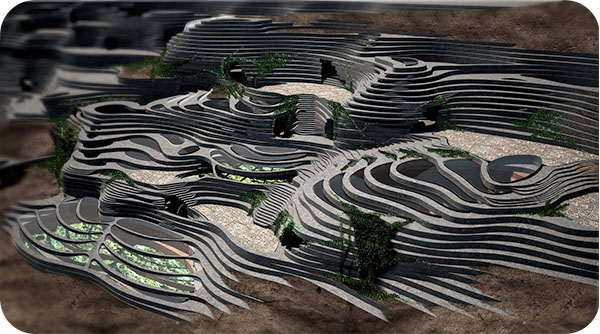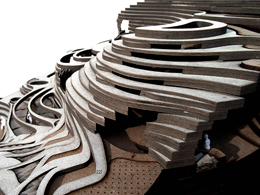STUDENTS PROJECTS
PROJECTS2013
Student : Georgia Syriopoulou
Tutors: Nimish Biloria, Henriette Bier, Martin Sobota
Hyperbody studio | TU Delft
Presentation date : June 2014
A study on the social, economic but also philosophical implications posed by the return of the modern society to the landscape of the countryside and the conditions of this return, contemplated upon the design of a new-era agricultural cooperative in a typical mountainous area in Arcadia.
In Greece of the 1920's 62% of the population lived in rural areas. In 1991 this population had decreased to 28%, Of course, a demographic change of this scale during only 6 decades had a huge impact on the socio-economic and production structure of the country. This condition of the greek society has been described as a cultural trauma that emerged in the face of the appropriate occasion offered by the modernization acceleration of the 70's. The pilgrimage to the village of the origins is established, in combination with the bursting development of the vacation residence, that turned out to become the core of the greek dream. The permanent rural population is substituted at large by the occasional population of excursionists, tourists and second house users with this new wave being embodied in pseudo-folk villas and touristic resorts. The countryside in the 90's is identified as the place for several fantasies to take place: coming in touch with the true nature of things, feeling free, regenerating the body etc.
Even though the greek countryside and the agricultural sector have faced a continuous decline in the last decades, with an enormous brain drain and misuse of the European subsidizations, the government in the crisis era promotes agriculture as the flagship of growth for the future, initiating several subsidization programs for new and young farmers to exploit the parental resources, with priority to mountainous and disadvantaged areas. Simultaneously, geoponics are considered to be the passport to employment in the future. Additionally, a national survey concerning the turn towards agriculture reveals a general positive shift towards the potentials and prospects of a relocation to the countryside.
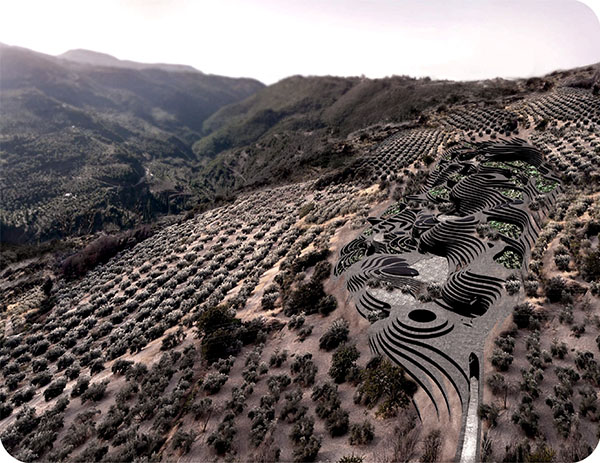
We are therefore watching the construction of a new rhetoric that presents the countryside again as a promise land for economic prospering, employment, better quality of life and all the respective fantasies that the depressed urban society is projecting upon the reality of the province.
These conditions are fertile ground for an interesting scenario to come up:
In the future, a considerable amount of ex-urbanites will leave the urban centers and colonize the countryside to work in agriculture, causing two different worlds to collide.
How will this return happen? How does the background of a previously urban population that becomes the new peasants, interact and shape the new social and production structure?
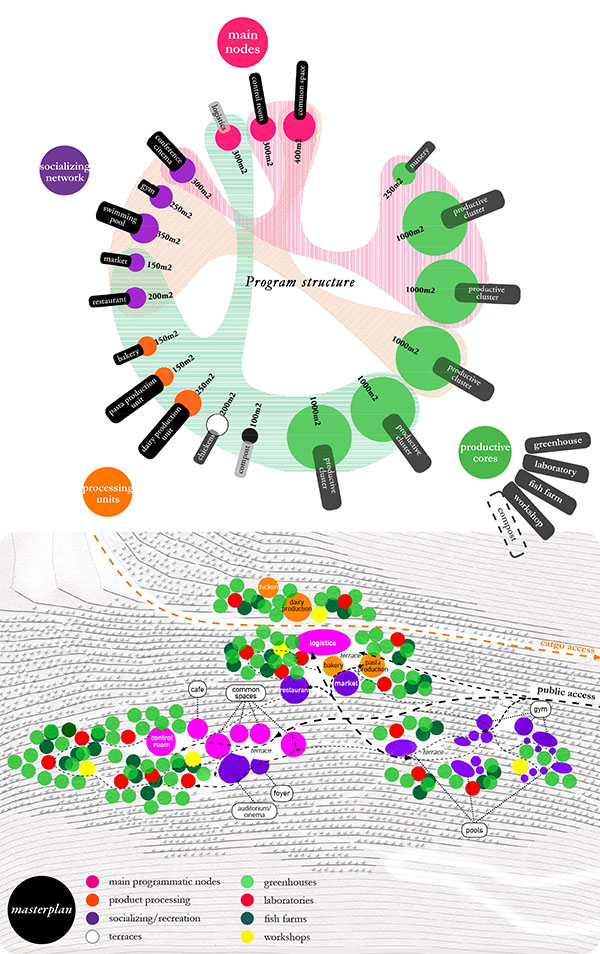
The most imposing element of the context is of course the topography, both as a physical presence and an abstract idea. Starting from the idea of the topography as a 3-dimensional receptor, I also reversed it by perceiving the building as a soft body that merges into the landscape so that a new landscape-building can emerge, through the reciprocal deformations of both: the ground is reformed to create the new landscape of the cultivations; the buildings are pushed into the new ground and they start to interact.
The tool with which I pursued this was the typology of the cultivation terrace, exactly because it brings into physical existence the abstract notion of the ground contours; it describes the landscape (περι-γράφω) by delineating the topography.

The foreign body merges with the receptor and a hybrid condition is created where the farmer becomes a scientist and the peasant becomes a cosmopolitan ex-urbanite used to the plurality and the pleasures of the city. The setting where these characters act is a sensual space between natural and artificial that refers back to the cave as the primal human dwelling and to the idea of a lost paradise; a flowing and pulsating body engulfing cultivation, processing and recreation functions in a continuous internal and external artificial landscape, alterations of darkness and light, enclosed, open and semi-open spaces and terraces.

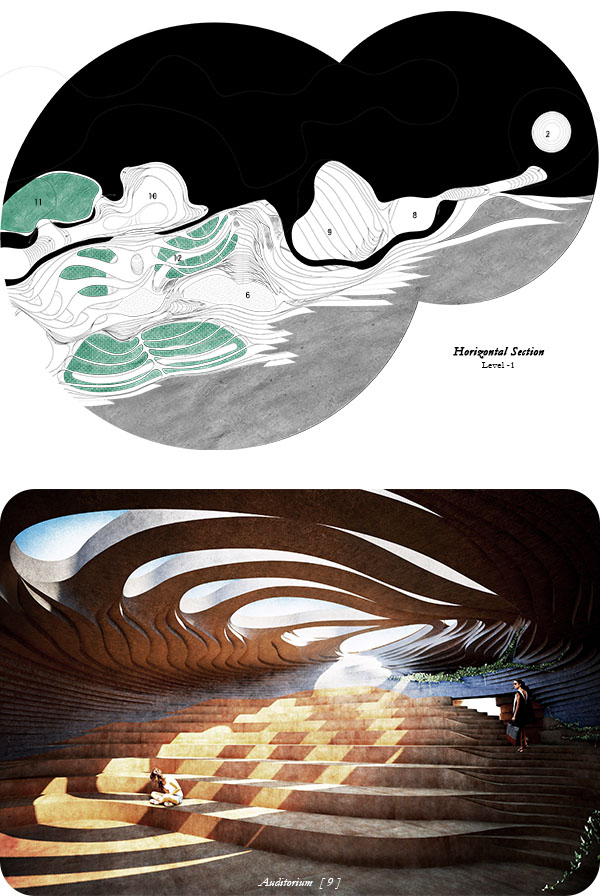
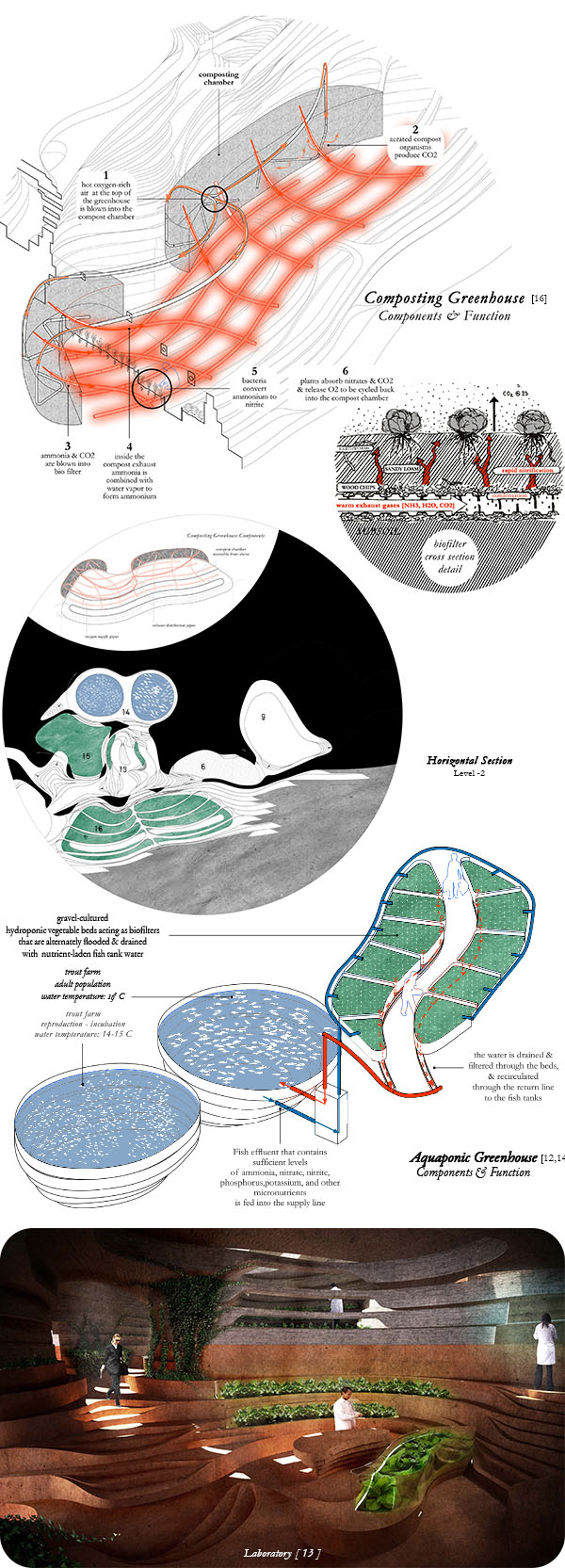
Structural system Due to the solidity of the ground & the architectural ambition, rammed earth is used the same way as a stone foundation, forming the base of the buildings. The excavation is used as the formwork on the one side of the rammed earth. This way, big amount of the excavated materials can be reused for building work without specialized work force while rammed earth provides with a high thermal storage capacity, integration of heating systems, moisture regulating properties and improved spatial acoustics. However, rammed earth can only take compression forces, hence, a concrete shell-like structure substitutes it in the dome-like enclosures of the spaces, resting on top of the rammed earth base.
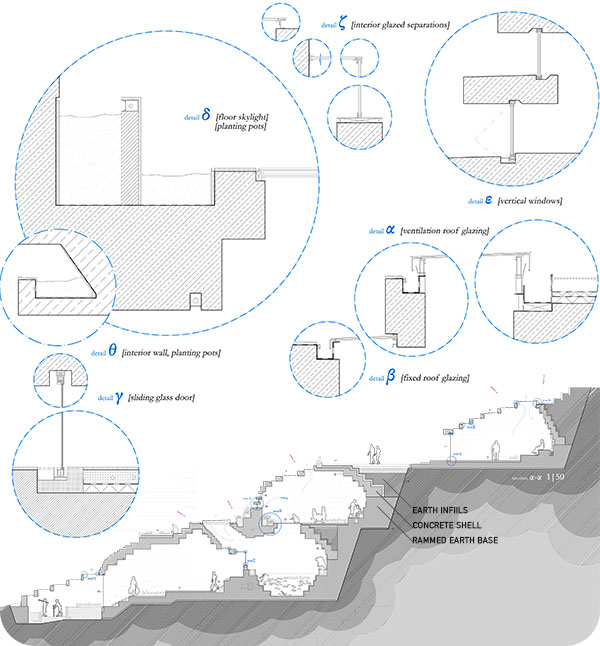
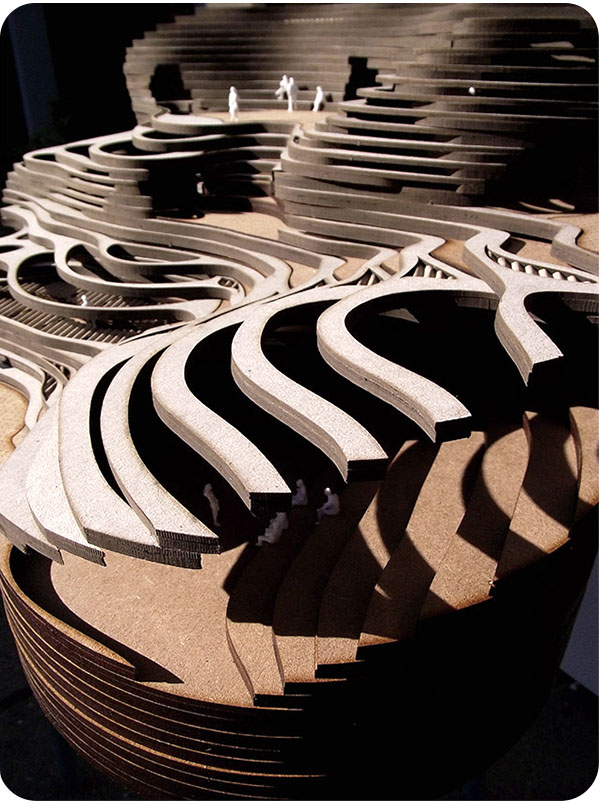
The project brings a deeply rooted and topical architecture in dialogue with the a-topical notion of an Eden; a new Arcadia, mutated by the co-existence of idle pleasure and intense production, that attempts to redefine the physical and fictional landscape of the countryside.
